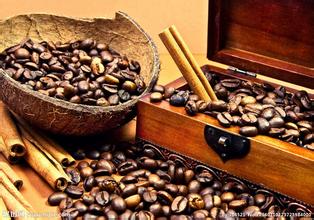Description of Taste and Flavor of Tanzanian Coffee
Description of Taste and Flavor of Tanzanian Coffee
Tanzania is rich in mineral resources. By 2014, the major minerals identified include gold, diamond, iron, nickel, phosphate, coal and various gemstones, ranking fifth in Africa in total. Tanzania also has huge natural gas reserves. According to official data released by Tanzania, Tanzania has proven natural gas reserves of 44 trillion cubic feet, and the total reserves are expected to reach at least 200 trillion cubic feet.
Due to geographical location as well as economic and political reasons, people outside Tanzania believe that Dar es Salaam is the capital of Tanzania. In fact, Dar es Salaam is not the capital of Tanzania. It was the capital of German East Africa from 1891 to 1916. It was the capital of Tanganyika from 1961 to 1964 and later the capital of Tanzania. In 1974, the Tanzanian Parliament decided to move the capital to the inland town of Dorma.
Mount Kilimanjaro in Tanzania is 5895 meters above sea level and connected to Mount Meru. It is the main production base of Kilimanjaro coffee. Mount Kilimanjaro is the highest peak on the African continent and the only snowy peak on the earth located on the equatorial line. It is "the roof of Africa" and "Snow White on the equator". The rich volcanic ash gives the coffee here a strong texture and soft acidity, with the characteristics of typical African coffee beans. Kilimanjaro AA is the highest grade of beans with high quality in all aspects. Medium or more moderate after baking has a strong aroma. It is suitable for use as a single product or iced coffee.
The coffee cups made in Songea are well-behaved, reflecting the common characteristics of "northern" coffee. However, the coffee produced by Kibo has lost this characteristic because of the loss of flavor during transportation. Songea tastes clear and unrestrained, although it is still slightly more relaxed and mild than Kenyan coffee. This season, Nkoanekoli and Ngorongoro have also joined the ranks of coffee cultivation, which represents the development of coffee cultivation in other regions. However, there is a place where the coffee is stale and tasteless, with no performance in the cup. We have tested some garden beans, and they all have obvious "transportation problems", that is, the flavor of coffee beans has been lost in the course of transportation. But the problem is that although Tanzania is aware of the problem and has paid extra for it, the quality of coffee beans has not improved. So what can we do to encourage people to make mistakes and try their best to prevent the quality defects of coffee beans caused by transportation, so that their flavor can be better reflected?

Important Notice :
前街咖啡 FrontStreet Coffee has moved to new addredd:
FrontStreet Coffee Address: 315,Donghua East Road,GuangZhou
Tel:020 38364473
- Prev

Taste characteristics of Yega Chefe Coffee how big is the planting description of Cochel Manor
The taste characteristics of Yega Chuefei Coffee the planting description of Cochel Manor has a strict standard for collecting red fruits (as a result of coffee trees). Before exposing the coffee fruits, the unripe green fruits or defective fruits are removed manually, and the damaged or moldy fruits are removed in the process of sunlight. after two weeks, the flesh sugar and essence are all infiltrated into the coffee beans, and the water content is reduced to 12%.
- Next

In which season of the year is Yejashafi coffee harvested?
In which season of the year, Yejasuefi Coffee is a small town, 700-2100 meters above sea level, which is synonymous with Ethiopian boutique coffee. It has been a wetland since ancient times. The ancient saying "Yirga" means to settle down and "Cheffe" means a wetland. The mode of production and flavor of coffee here are so prominent that Ethiopian coffee farmers compete with their own coffee.
Related
- Detailed explanation of Jadeite planting Land in Panamanian Jadeite Manor introduction to the grading system of Jadeite competitive bidding, Red bid, Green bid and Rose Summer
- Story of Coffee planting in Brenka region of Costa Rica Stonehenge Manor anaerobic heavy honey treatment of flavor mouth
- What's on the barrel of Blue Mountain Coffee beans?
- Can American coffee also pull flowers? How to use hot American style to pull out a good-looking pattern?
- Can you make a cold extract with coffee beans? What is the right proportion for cold-extracted coffee formula?
- Indonesian PWN Gold Mandrine Coffee Origin Features Flavor How to Chong? Mandolin coffee is American.
- A brief introduction to the flavor characteristics of Brazilian yellow bourbon coffee beans
- What is the effect of different water quality on the flavor of cold-extracted coffee? What kind of water is best for brewing coffee?
- Why do you think of Rose Summer whenever you mention Panamanian coffee?
- Introduction to the characteristics of authentic blue mountain coffee bean producing areas? What is the CIB Coffee Authority in Jamaica?

